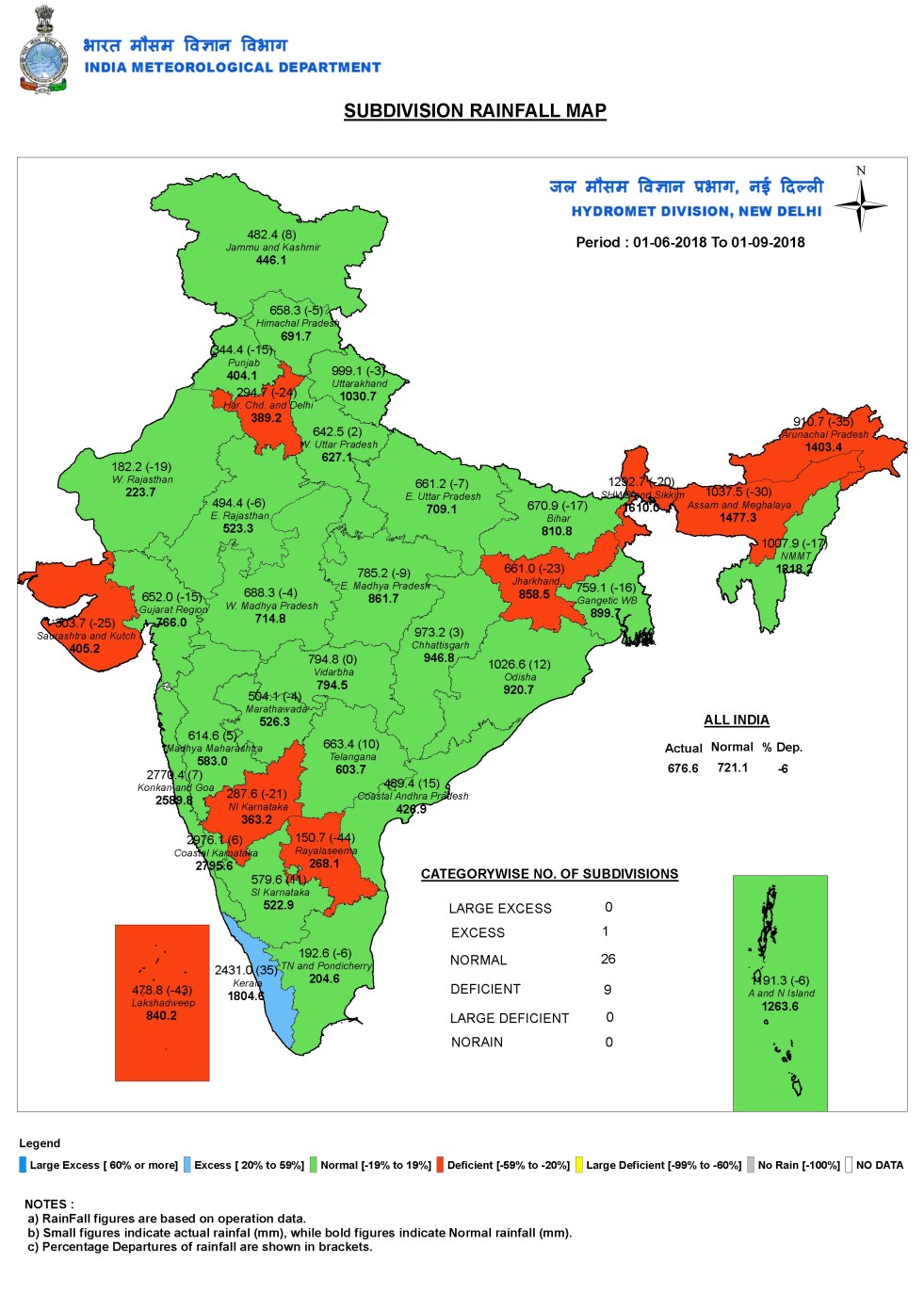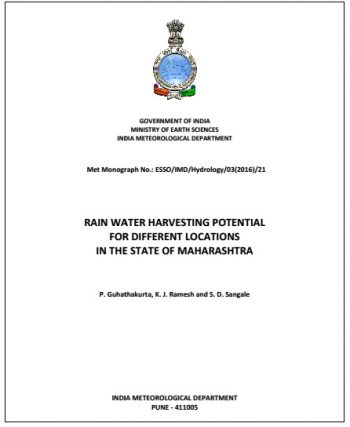For July 2022, an analysis of the daily district wise rainfall data from India Meteorological Department (IMD) shows that there were 809 (717 in July 2021) instances when district rainfall of a day was above 50 mm. [Considering that the normal monthly rainfall of India July is 285.3 mm, the average daily rainfall in this month is about 9.2 mm.] Such high rainfall instances included 663 (595 in July 2021) instances when rainfall was 50-100 mm, 107 (98 in July 2021) instances when it was 100-150 mm, 28 (17 in July 2021) times it was 150-200 mm and 16 (7 in July 2021) times above 200 mm. Interestingly, in June 2022[i] there were twenty seven instances when rainfall was above 200 mm, when the rainfall is supposed to be much below July rainfall. As noted in detailed article[ii], the July 2022 rainfall all over India was 16.8% above normal.
Continue reading “High Rainfall days in India’s districts in July 2022“Tag: India Meteorologocal Department
IMD forecast of Water Volume in River Basins: Can it help prevent Dam floods?
On Aug 16, 2019, a news report[i] announced that Pune IMD (India Meteorological Department) will now (from Aug 1, 2019) provide to CWC (Central Water Commission) forecasts of water volume that may accumulate in river basins across the India “In a bid to ensure effective reservoir management.”
Pulak Guhathakurta, head, Climate Application and User Interface at Climate Research and Service at IMD-Pune was quoted saying, “We will make use of our forecasts and rainfall information to calculate the total volume of water expected to accumulate in every river basin and sub-river basin on the basis of its area expanse. This information will then be shared with CWC and other authorities, like the department of irrigation. It will be handy and can be decisive while deciding the release of water from time to time, especially during the monsoon.” This statement again emphasised that this was being done to help reservoir management. The news report than mentioned the Kerala floods in 2018 and role of dams therein. Continue reading “IMD forecast of Water Volume in River Basins: Can it help prevent Dam floods?”
The mirage of normal monsoon
According to IMD, India is having normal monsoon this year, so far, as per rainfall till date (Sept 1, 2018). Against normal rainfall of 721.1 mm, India has received 676.6 mm rainfall, which is 6.2% below normal, considered within normal rainfall definition as per IMD. So India is having normal monsoon rainfall, says IMD. Let us check this against some ground realities.
However, East and North East India, one of the four regions for which IMD provides rainfall data, has so far had 27% below normal rainfall, while South India had 9% surplus rainfall. Thus, while at all India level, what seems all normal, is average of different, though serious departures from normal rainfall. Let us say this is first level of mirage of normal rainfall. Continue reading “The mirage of normal monsoon”
River Wise Rainfall in Monsoon 2017
India’s most important season, the June-Sept South West Monsoon has just ended officially on Sept 30, 2017. India Meteorological Department (IMD) reported that India received 841.3 mm rainfall in these four months of monsoon 2017, compared to normal rainfall of 887.5 mm. So Monsoon 2017 rainfall was 5.2% below normal.
The standard dominating reporting of monsoon rainfall figures in India is either state wise or sub division wise[i]. Accordingly, IMD reported that 25 sub divisions reported normal rainfall, 5 sub divisions[ii] reported excess rainfall and six sub divisions[iii] reported deficit rainfall, as can be seen from accompanying IMD sub division wise map of 2017 monsoon rainfall figures. Continue reading “River Wise Rainfall in Monsoon 2017”
IMD estimates rainwater harvesting potential of Maharashtra
India Meteorological Department of Pune (IMD) functioning under Ministry of Earth Sciences has recently (Nov 2016) published a study titled “Rain water harvesting potential for different locations in state of Maharashtra”.[i] The study was undertaken to assess the potential of roof top rain water harvesting based on mean annual rainfall. The need for the study was prompted by requests from a number of NGOs for information on how much rain can be harvested in Maharashtra during a good rainfall.[ii] The study basically estimates volume of rainwater (in liters) that could be harvested per sqft of roof area at 326 locations across Maharashtra where IMD stations are located.
Though this study is an important step, there are a number of ways in which such a study, which IMD plans to eventually conduct for other states as well, can be improved, in addition to a number of limitations that the study has, as elaborated subsequently. Continue reading “IMD estimates rainwater harvesting potential of Maharashtra”




